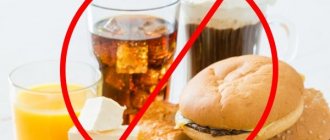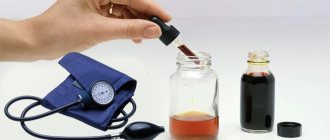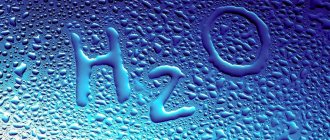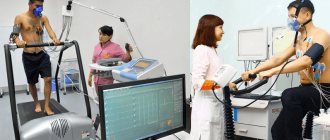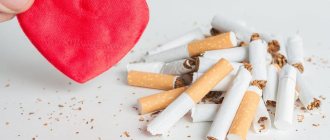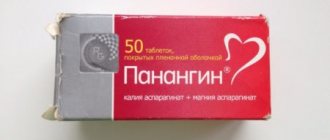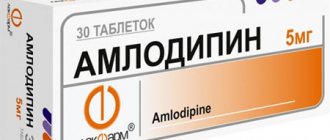Patients with hypertension are usually forced to coexist with their disease all their lives - it is very difficult to completely get rid of the disease, even if all medical orders and recommendations are followed. A hypertensive patient simply has to get used to his illness and adjust his life to it, so as not to provoke new complications. One of these methods to alleviate the course of the disease is therapeutic fasting.
Is it effective?
The point of this technique is to plunge the body into a state of stress in which it will have to work, fully using the body’s resources. In most cases the effect is actually achieved. The patient's blood pressure normalizes and blood circulation improves. Moreover, if everything is done correctly, at the end of the fasting period (and according to all the rules, this should be done in periods), the pressure readings will drop to hypotonic levels, after which they will return to normal and rise again if we are talking about chronic hypertension.
Fasting for hypertension still causes a lot of controversy both among those suffering from this disease and among doctors. Increased stress on the body during fasting can worsen the situation for the weakest patients. So you need safety net in the form of a consultation with a doctor.
The main danger of the method is that most of those who practice it once or on an ongoing basis often make the mistake of mistaking the measured and accurately calculated method by specialists for an ordinary hunger strike. By not following the rules and deadlines, you can seriously undermine your health, and this is precisely the main danger of the method.
Before you begin therapeutic fasting, you need to carefully study the characteristics of your body, the current illness and other individual factors so that such therapy does not harm you. People with a weak psyche, prone to pessimistic and depressive mood swings, should not practice fasting, since the process requires, first of all, moral endurance, especially for the first time.
Gastrocardiac syndrome
This disease was first described more than a century ago. This is a specific disorder of the heart and coronary arteries, which occurs due to an effect on the cardiac region of the stomach. In fact, this is a disease of the gastrointestinal tract, not the heart muscle.
This disease is characterized by the following symptoms:
- pain in the heart area;
- arrhythmia;
- dizziness;
- increased blood pressure (sometimes significant).
If you have high blood pressure due to gastritis, you should think about other reasons for this phenomenon
All these signs appear immediately after eating and disappear if the patient induces vomiting. Diagnosing a syndrome in which pressure from the stomach increases is quite difficult, since it successfully disguises itself as angina pectoris.
Basic Rules
Fasting is not as easy as it seems. It is not enough to simply start limiting yourself in food, driving your body into a stressful and completely useless situation for it. The body must be prepared for treatment. They usually start by switching to a balanced, nutritious, regular (three meals + two snacks) diet. It’s great if this kind of nutrition is already your main diet - this will greatly simplify things. If it is not possible to comply with this, simply eliminate everything harmful to the maximum:
- sweet;
- flour;
- fat;
- roast;
- It is too salty;
- spicy.
The benefits and harms to the body of therapeutic fasting often completely depend on the person himself and how willing he is to follow the rules for the sake of the result. You need endurance to force yourself to give up food (here it will be most difficult for overweight people due to the increased need for food) and to overcome phase symptoms. The phases of therapeutic fasting are stages that the patient gradually goes through, bringing the body into the state necessary for treatment.
Food arousal phase
This phase can last a day or two. Depends on how often a person changes his diet so radically. This is a completely natural reaction of the body - the body reacts to a sudden interruption of nutrients with a strong feeling of hunger. Overcoming this stage is a real challenge for most beginners, but after it everything becomes much easier.
Drowsiness during fasting is normal. This is how the body tries to save energy and force you to spend as little of it as possible. There is no need to torture yourself if the feeling of drowsiness and weakness is irresistible. Get some sleep if possible.
Set yourself up for a positive outcome. If you live alone, remove all available products from your reach or at least from your sight during this time. It is also not recommended to visit places focused on food (special departments in shopping centers, markets, supermarkets), but distracting yourself with a walk with other people will be very useful. If this is not possible, just do your favorite things or work, trying not to think about food.
Ketoacidosis phase
Occurs 7–8 days after the onset. Despite the fact that the patient’s main tormentor, a strong feeling of hunger, subsides significantly, this phase is more dangerous for the body. In a state of near exhaustion, a person may not realize that he is in serious danger. That is, he cannot always distinguish the obvious consequences of completely depriving the body of food from alarming symptoms, when they appear, he must urgently stop fasting and immediately go to the doctor.
In addition, existing chronic diseases become aggravated in the ketoacidosis phase. A white coating may appear on the patient’s tongue, an unpleasant odor may appear from the mouth, and in general the person will feel very weak and broken, which is logical. This is called a “cleansing crisis” and dealing with it correctly is the main task of therapeutic fasting. It is she who brings the main benefit.
If you feel very unwell, you should consult a doctor immediately, especially if this is your first experience. It doesn’t matter how far you have gone, if you have the following symptoms: nausea, vomiting, fainting, severe seizures and long-lasting dull headaches, stop the course immediately and postpone it until better times or do not repeat it at all. It is possible that the method of therapeutic fasting to lower blood pressure is not suitable for you personally.
Basic rules of fasting:
- If possible, limit your activities, both work and otherwise. You may simply not have enough energy for everyday activities and other important things, especially if this experience is new to you. It would be ideal if you try therapeutic fasting during vacation or a free shift at work, especially since you need to start gradually.
- Maintain phase control. It is very important to respect the time frame. For beginners, it is highly recommended not to fast for more than three days in a row. Such severe stress can provoke a serious crisis in most of the body's systems. For more experienced people, it is still highly recommended not to fast for more than a week a month. This may be effective in the short term, but may be detrimental to the health of the body in the long term.
- Drink water unless you are on a special diet that does not allow even liquids (this is very dangerous and requires experience and specialist consultation). Water, especially mineral water, if possible, restores a weakened body in terms of microelements and allows you to remain alert for some time. You can also deceive the feeling of hunger with the help of liquid.
The use of fasting for medicinal purposes
Today, among specialists there is a division into two camps regarding the possibility of using fasting to normalize high blood pressure. At the same time, reviews from many patients and the results of treatment courses from practicing doctors lead to the increasing popularity of such methods.
Proponents of the method say that weight loss, a decrease in the content of folic acid and vitamin B12 lead to the fact that blood pressure tends to decrease and normalizes over time. Opponents say that food restriction often leads to a weakening of the body, a deficiency of nutrients, and hormonal imbalance, which is dangerous if you have high blood pressure; this can further aggravate the situation.
Fasting has a positive effect on a healthy person, since dietary restrictions help normalize weight, remove toxins, improve metabolic processes and the functioning of the cardiovascular system. For hypertensive patients, the same effects are possible, but the presence of blood pressure problems often limits the ability to use certain techniques and requires medical supervision.
Kinds
There are not so many types of fasting, since the essence of all methods is approximately the same: to bring the body to the maximum permissible critical state in order to fully use the body’s resources and force it to normalize its processes on its own. However, if you have chosen a method, strictly adhere to it until the end; incorrectly mixing elements of different methods can greatly harm you.
On the water
This is the main option, suitable for beginners who cannot do without water for any reason, including medical reasons. In this technique, all food is excluded without exception, but restrictions on drinking are not imposed on the patient. Of course, it can only be water: no hot drinks, not even weak green tea are allowed. This option is considered the easiest of all possible, recommended for older people and those with serious heart problems.
Dry (without water and food)
This can only be practiced if you have experience and, which is very desirable, constant communication with a specialist. Without water, a person survives much worse than without food. There may be fainting from dehydration, problems with salivation, problems with urination, etc. You can fast in this way for no more than 4 days; further therapy can be life-threatening!
Combined technique
Typically, this option is practiced by experienced hypertensive patients who regularly normalize their blood pressure in this way. The method consists of a competent and skillful combination of standard water fasting and completely dry fasting. A person who wants to get the maximum benefit from therapy tries to complete it to the maximum, but for reasons of common sense he will not harm himself, no matter how much he suffers from hypertension.
Typically, the patient simply alternates standard fasting with dry fasting for no more than 14 days in total, carefully monitoring the body’s condition indicators throughout this time.
Suvorin's technique
Suvorin is known in narrow circles as a popularizer of alternative medicine, demonstrating the effectiveness of the methods he developed on himself. His techniques may seem harsh to both the novice and the long-time fasting practitioner, but the results confirmed by others following his instructions can convince even the most inveterate skeptic.
Suvorin himself calls his treatment course “complete cleansing”; it is as strict as possible and lasts exactly 40 days.
General principles of the technique:
- Complete refusal of food in any form. Liquid can be consumed, but in the minimum quantities necessary to maintain the body in a state of vigor.
- Daily gastric lavage yourself, using vomiting - you need to drink half a liter of water in one gulp, and then make yourself sick.
- A parallel course of laxatives of herbal and natural origin for the first time, while the gastrointestinal tract is not yet completely free of food residues.
- Moderate physical activity. Long, grueling workouts in the standard mode will instantly exhaust the body without food, so you should limit yourself to only cardio exercise (jogging, morning exercises).
No less important than the methodology, Suvorin considers the process of exiting it after 40 days. Care should be taken not to harm the stomach, which has weakened without food, and for the first month significantly limit the intake of carbohydrates and fats.
Suvorin's technique
To improve your well-being and eliminate high blood pressure, the author of the technique advises adhering to the following rules:
- Any drinks and water can be drunk in limited quantities (up to one liter per day). Also, during treatment it is necessary to completely abstain from food;
- To help the body eliminate all waste and toxins, natural laxatives, enemas and rinsing should be used daily. The author of the technique believes that this will help not only improve digestion, but also remove all harmful substances from the body;
- It is advisable to cleanse the stomach of toxins that have accumulated in the body every evening. To do this, you need to drink about 500 milliliters of clean water and induce vomiting;
- In addition to the above procedures, it is necessary to carry out physical exercises every morning. You can also do slow jogging in the fresh air;
- Every evening, take at least 30 minutes of walking a day.
When fasting according to the Suvorin method is carried out correctly, many patients develop a white or yellow-green coating on the tongue. This plaque means that all harmful substances are removed from the body. There are cases that during treatment, the color of the tongue of patients completely changes. Don't worry about this. When the body becomes completely cleansed, the oral cavity will become completely clean.
After finishing a strict diet according to the Suvorin method, it is not recommended to immediately return to your previous diet. In the first month, fried, flour, spicy, salty and sweet foods, as well as many carbonated drinks, should be excluded from the diet.
Contraindications
First of all, deal with personal contraindications before following general templates. A person may not suffer from any of the diseases listed below, but fasting will still be prohibited for him.
Underweight
The main article of the ban is insufficient weight (draw conclusions by checking the body mass index table). If the deviation to the smaller side reaches or exceeds 15%, do not practice therapeutic fasting under any circumstances. This is dangerous and can result in exhaustion for the body, which for some reason has not accumulated nutrients, mainly fats, in the required quantities.
Could blood pressure rise even higher amid a crisis if an underweight hypertensive patient brings himself to the point of exhaustion? Quite possible! And to prevent this, act wisely.
Oncological diseases and unspecified malignancies
A person who is fighting cancer, no matter what stage of development it is at, has no time for therapeutic fasting. The body is already in a critical condition; severe stress due to lack of nutrients will hit it so hard that it can accelerate the development of the underlying disease.
In no case should it be combined with the treatment of cancer (chemotherapy in particular). To fight cancer, drugs are not enough; it is also necessary to provide a nutritious diet.
Gastrointestinal diseases (acute and chronic), as well as acute infections
Fasting directly affects the stomach and intestines, so it is logical to assume that their diseases are a strict contraindication to therapeutic fasting. To function properly, the stomach needs to digest food daily. If food is not supplied, the body will still secrete gastric juice, which will corrode the walls of the organ from the inside.
It is strictly contraindicated to practice therapeutic fasting if you have already experienced gastritis or, even worse, any form of stomach or duodenal ulcer. The technique in this case can cause you irreparable harm. If nothing like this has ever happened to you before, you can still get gastritis, which can lead to more serious diseases in the future.
Diabetes
For diabetes mellitus, any diets that are not prescribed to the patient due to his illness are contraindicated. This is an irreversible process of destruction of the body, which requires great effort to contain. Therapeutic fasting will nullify all these efforts and can aggravate the situation, even leading to an attack.
Tuberculosis (any form)
Another intractable disease that leads to depletion of the body over time. Combining a disease that “dries out” the body more and more every day, even with active treatment, and fasting is a very dangerous idea. Strictly contraindicated.
Pregnancy and lactation
The fetus takes almost all the strength and nutrients from the mother - this is natural, since the mother is so far the only source of everything necessary for the baby. The embryo, the embryo, and then the full-fledged fetus develops constantly throughout the 9 months of pregnancy, without interruptions - this is why the nutrition of the expectant mother, her abandonment of bad habits and the transition to a stable, nutritious diet is simply necessary.
Therapeutic fasting during pregnancy and breastfeeding is not only not recommended, but prohibited. This is dangerous for the fetus - the remaining substances that the body accumulates for the fetus will run out very quickly and the child will begin to starve. If the mother with difficulty, but survives such stress (even the smallest), the fetus may not be able to withstand it.
Therapeutic fasting for children
Although a child has his own rights and responsibilities, in many ways he still depends on his parents. They are the ones who decide how and what their child eats and are responsible for it. A child, especially if he is at a young age, may not like this therapy very much - children are active and need constant replenishment of energy for study, sports, play and overall development.
Depriving him of this is not only dangerous, but also harmful to the psyche of the child, who may not fundamentally share your views on a healthy lifestyle. It’s better to wait until adolescence, when he can make such decisions on his own.
For young children (under 10 years old), therapeutic fasting is in any case strictly not recommended. The methods are designed for an adult without critical damage to the body, especially in the gastrointestinal tract. A child with such fasting can get gastritis or the prerequisites for it over several times.
If treating hypertension with fasting does not suit you, you can try treatment with propolis, herbs, raspberries or viburnum
Consequences
The appearance of a headache is not a very serious cause for concern - as it seems to many patients.
However, some cases suggest the opposite.
The intensity of the pain syndrome can become so unbearable that a person will not even be able to do ordinary household activities.
In addition, such discomfort often indicates the presence of some problems in the body.
And, accordingly, if you do not take any measures and do not pay attention to such a symptom, then there is a risk of encountering complications and negative consequences.
Even if everything is fine with the body and the reason is only a lack of glucose or a reaction to stress, there is also a risk of harming your body. If pain in the head manifests itself, then this already indicates negative processes occurring in the body. This means that we need to take care of their elimination and cure.
If neither food intake nor drug therapy helps in getting rid of headache pain, then it is recommended to contact a medical facility for help as soon as possible. In such a situation, a headache indicates the development of a dangerous disease in the body. The sooner competent diagnostic measures are carried out, the sooner treatment will begin and the patient will be cured of the disease.
Useful video on the topic:
